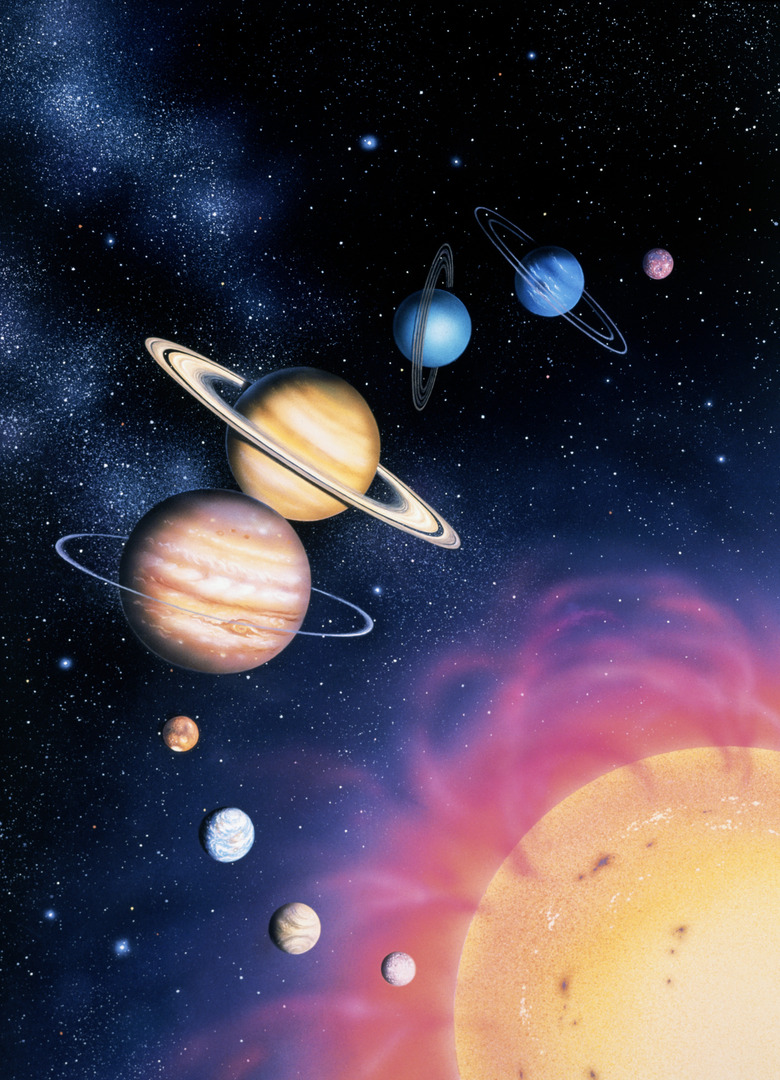Does It Rain On Pluto?
Powerful telescopes and spacecraft offer a glimpse of the weather on Mars and other plants located near Earth. But, conditions on distant planets in our solar system remain a mystery.
Although most scientists believe it doesn't rain on Pluto, this far-away dwarf planet experiences its own unique weather patterns, including snowfall and seasonal temperature changes. Advances in technology, including NASA's New Horizons spacecraft, should offer tantalizing glimpses into the weather at the fringes of our solar system.
The Water Cycle
The Water Cycle
To understand why it doesn't rain on Pluto, it's helpful to understand how rain occurs here on Earth. Water on the ground and in oceans, lakes and streams evaporates into a gas and condenses into clouds when it reaches the atmosphere. Then, it falls to the earth as rain, repeating the cycle.
At the time of publication, scientists have not discovered evidence of liquid water on Pluto. Some scientists suggest that Pluto might have an underground ocean of water concealed beneath thick layers of ice; this theory requires further research and data. Given the extremely cold surface temperatures on Pluto, even the presence of underground water does not suggest the possibility of Earth-like rainfall.
Weather on Pluto
Weather on Pluto
According to the National Weather Service, surface temperatures on Pluto range from a brisk -172 to -238 degrees Celsius (-378 to -396 degrees Fahrenheit). Thanks to a very thin atmosphere of nitrogen and methane, NASA scientists suggest that Pluto's entire atmosphere could freeze and fall to the surface as snow as the planet rotates. Mental Floss cites Hubble telescope images, in which regular snowfalls of nitrogen, methane and carbon monoxide give Pluto its pink hue. These gases might shoot into the air from geysers or simply freeze in mid-air because the planet's surface is extremely cold.
Gathering Data
Gathering Data
Pluto is very hard to explore because it is located so far away. The dwarf planet's small size makes observation and data collection even more difficult. The Hubble telescope and other powerful devices catch a glimpse of Pluto only rarely. In 2006, NASA launched the New Horizons spacecraft, which is scheduled to reach Pluto in 2015. It is designed to provide a great deal of new data and further analysis of this very cold and distant place.
Rain in Space
Rain in Space
Although it doesn't rain on Pluto, various moons and planets throughout the solar system experience their own forms of precipitation. Saturn's moon, Titan, experiences a methane rain cycle that's similar to the water cycle on Earth. Liquid helium rains on Jupiter; sulfuric acid rain falls on Venus. Jupiter's moon, Io, has sulfur dioxide snow, and dry ice snow falls on Mars. Crystallized carbon falls like tiny diamonds of snow on Uranus and Neptune. Neptune's moon, Triton, experiences snow similar to that found on Pluto, thanks to nitrogen and methane snow, which gives the planet a pink glow.
Cite This Article
MLA
Beach, Emily. "Does It Rain On Pluto?" sciencing.com, https://www.sciencing.com/rain-pluto-4737/. 24 April 2017.
APA
Beach, Emily. (2017, April 24). Does It Rain On Pluto?. sciencing.com. Retrieved from https://www.sciencing.com/rain-pluto-4737/
Chicago
Beach, Emily. Does It Rain On Pluto? last modified August 30, 2022. https://www.sciencing.com/rain-pluto-4737/
